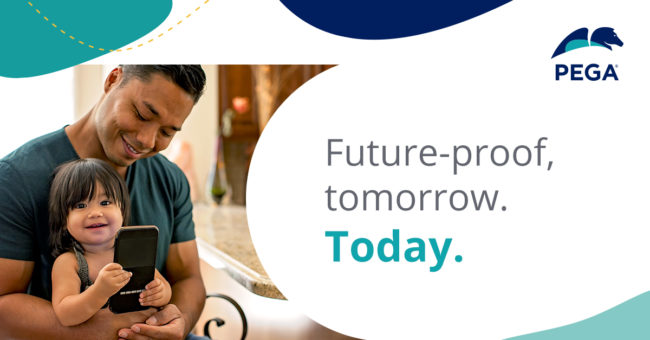With the right strategy and set of tools, an agency can adapt to today’s changing working model and continue to provide high-quality customer service and experience.
Future-proofed, multi-dimensional technology can help agencies to scale up their customer service with digital messaging channels, case management and intelligent automation.
This is done by extending digital channels to manage concurrent interactions, particularly channels that enable customers to solve their own issues through self-service or allow representatives and intelligent chatbots to engage with multiple customers through digital messaging.
Providing customers with alternative reliable channels through which to seek service can help drive down call volumes.
Automation can help customers arrive at resolutions on web chat, email, or any other channel, just as effectively as a call with an agent – or at times, more effectively.
In instances where the customer still chooses to call, case management can help to speed up the interaction by orchestrating work across the organisation, reducing the average handle time.
Demonstrating empathy
Agencies need to demonstrate to customers that they care by showing empathy.
It is important to maintain the level of service that customers expect by providing service that is easy, efficient and empathetic.
Agencies need to meet customers wherever they are, at any hour of the day, whether through machine-based or human engagement.
They need to value their time by increasing service efficiency with shorter wait or interaction durations.
Added efficiency helps agents work through their queues more easily, and by spending less time on each contact duration, the organisation can also reduce costs.
It is important to understand the full context of a customer relationship and offer a humanised service, which can go a long way during unpredictable moments.
Humanised service goes a step beyond personalisation by adding the extra touch of conveying heart and compassion.
Steps to transformation
Some of the capabilities required to provide easy, efficient and empathetic service include contextual self-service, intelligent virtual assistants, case management, artificial intelligence (AI) and recommended actions.
These can be carried out by agencies without exponentially increasing their spend.
The five steps to transformation are:
- Triage volume
- Improve service levels
- Shorten interactions
- Optimise customer value
- Contain before contact
Innovation and modernisation
Government agencies struggle to modernise legacy systems while rapidly delivering citizen-focused services.
As stewards of taxpayer dollars, these organisations are challenged with the need to be innovative and modernise, while simultaneously responding to ongoing policy changes.
Traditionally, agencies and systems integrators have had two choices for modernising government operations:
- Custom development: Applications that are costly and time-consuming to develop and maintain. Once these custom or government-off-the shelf applications are actually delivered, the functionality is obsolete or does not meet business requirements.
- Commercial, off-the-shelf): Applications that can be inflexible and inadequate, forcing government organisations to spend more for customisations that require additional delivery time and then drive up the cost of future operations and maintenance.
Transformation vs ‘rip and replace’
The agile, secure, unified Pega Government Platform solution gives agencies a tool for transformation without having to “rip and replace” existing systems.
Pega will help reduce cost-to-serve by helping to deflect customers from the call centre toward more cost-effective channels.
With built-in artificial intelligence and automation, digital channels can help customers get the same results as a phone call — whether through automated options, or through synchronous and asynchronous digital messaging channels that let agents handle multiple inquiries simultaneously.
Intelligent guidance and collaboration tools can help boost agency productivity through the Pega-powered agent desktop, which streamlines service by consolidating tasks onto a single screen.
By providing task suggestions, dialogue recommendations and even manager-directed coaching, it helps improve agent performance and establish consistency.
Pega helps agencies to bridge the gap between back-end legacy systems and front office operations with enterprise case management.
This helps connect people, systems and processes and creates seamless experiences for customers and servicing staff.
By infusing both real-time omni-channel AI and end-to-end robotic automation, Pega helps agencies to future-proof their organisations by improving operational efficiency for more seamless service journeys across the entire agency.



